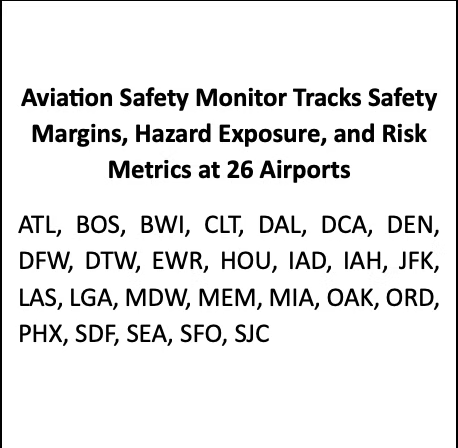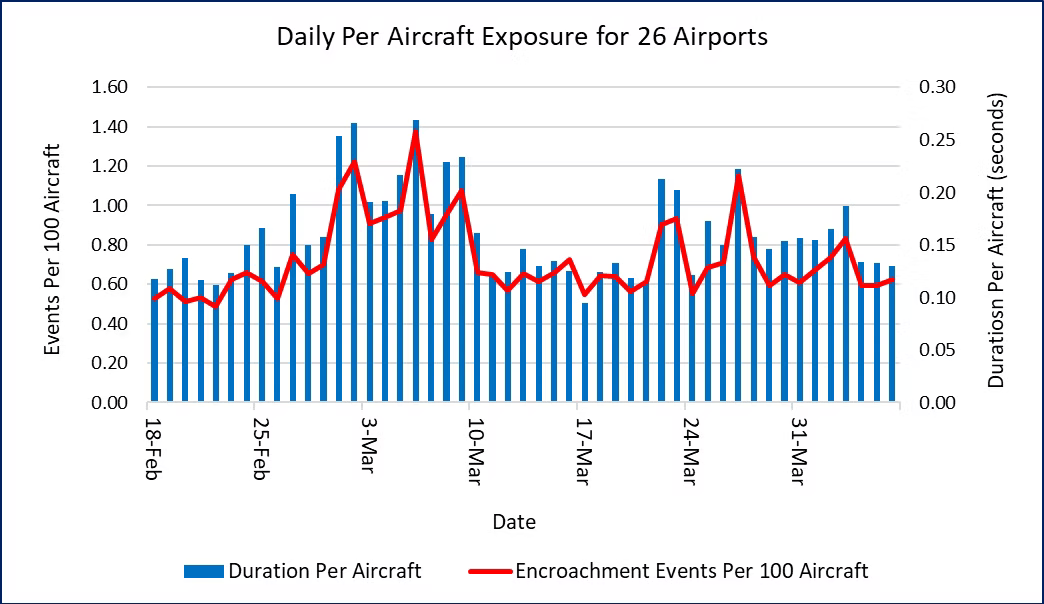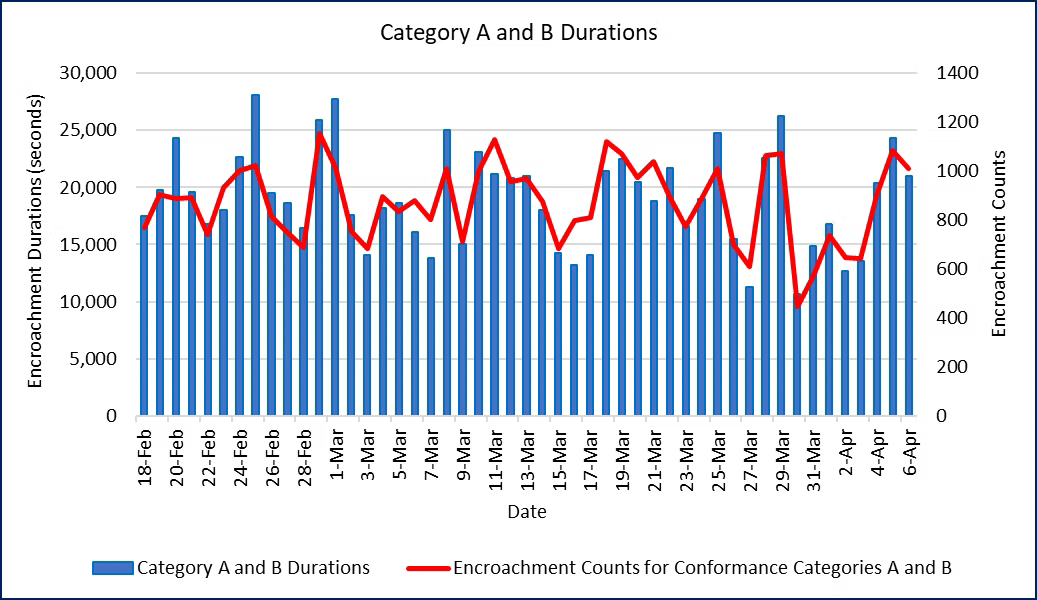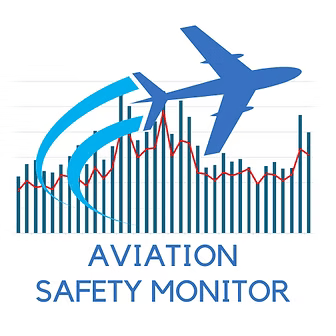Welcome back to the Weekly Aviation Safety Report! We were extremely pleased with the reception to last week’s inaugural post and we plan to keep reporting in the coming months. Each week, Robust Analytics will report on safety margins at 26 United States airports. With this Aviation Safety Monitor Weekly Report, Robust Analytics offers the aviation community timely assessments of changing safety margins and safety-related events. Ideally, tracking changes in terminal airspace safety margins will help to detect unsatisfactory trends in aviation safety, as illustrated by the clustering of safety-related events in late 2022 and early 2023.
Last week, we introduced some of the metrics we use to track changes in safety margins in terminal airspace. This week, we provide an update to those data. Dates and times are tracked in UTC and the week ends at midnight every Saturday. This week’s report includes data through 2400 UTC on April 13, 2024. Please read our article “Did Safety Degrade in the National Airspace System in the Winter of 2022-2023?” that applies our methods and data to examine whether safety margins decreased during the events of winter 2022-2023. The Aviation Safety Monitor measures safety margins by estimating the frequency, duration, and severity of buffer encroachments. A buffer encroachment occurs when an aircraft pair is predicted to be closer than the minimum separation standard – both lateral and vertical – for that airspace. The encroachment algorithms account for aircraft type (heavy and other aircraft), airspace rules, horizontal distance between successive aircraft, and vertical separation. FAA has defined minimum separation standards when aircraft are under Instrument Flight Rules (IFR). In this research, the buffer encroachments use the separation standards as a baseline to define the adequate safety margin levels. The buffer encroachment algorithms do not identify loss of separation events. Instead, they evaluate what would occur if aircraft continued on their current speed and heading. Avoidance of a loss of separation when a buffer encroachment occurs requires action by flight crews and controllers. In many cases, these actions call for the aircraft to follow well-defined procedures accurately and in a timely fashion. In that sense, when the algorithm identifies a buffer encroachment it highlights a situation in which pilots and controllers must operate with a shared awareness of what all aircraft in the airspace will be doing. It is with this understanding that we interpret buffer encroachments as a measure of safety margins in the airspace. Details on how we calculate safety margins are found in this document. (For more information on methods, please read “How Do We Measure Safety Margins?” posted on the Robust Analytics homepage.)We estimate duration and severity for every buffer encroachment. Figure 1 shows the total daily counts of the number of encroachments and their durations across the 26 airports in the 17 metropolitan areas that we monitor. The blue bars report estimates of total daily encroachment durations divided by the number of aircraft in the terminal airspace (approximately 50 miles of the airport center) for all 17 terminal airspaces. The red line reports the daily number of encroachment events per 100 aircraft.
Figure 1. Daily Encroachment Counts and Durations for 26 Airports (February 18, 2024 through April 13, 2024)
As data are added to the chart each week, readers can begin to detect some mild day-of-week variation and, more importantly, periods of a few days and even a week or longer in which encroachment durations increase significantly. In the coming weeks, we will examine these fluctuations in more detail.How severe are these encroachments? The FAA defines three separation conformance categories based on how far they are from the separation index. (See the description “How Do We Measure Safety Margins?” for details on the conformance categories and how we measure them.) In that classification system, Conformance Categories A and B are the most severe. Under our definition of a buffer encroachment, Category A and B encroachments are counted under all meteorological conditions.The daily durations and event counts for the sum of Category A and B encroachments are shown in Figure 2. The pattern differs from the Figure 1, as there is no obvious trend during the time period. This suggests that Category PE and C encroachments are affected by different factors from Category A and B. We will take a deep dive into those differences in a future weekly report.
Figure 2. Encroachment Durations and Event Counts for Conformance Categories A and B (February 18, 2024 through April 13, 2024)
Overall, at the NAS level safety margins have been stable for the past couple of weeks.




